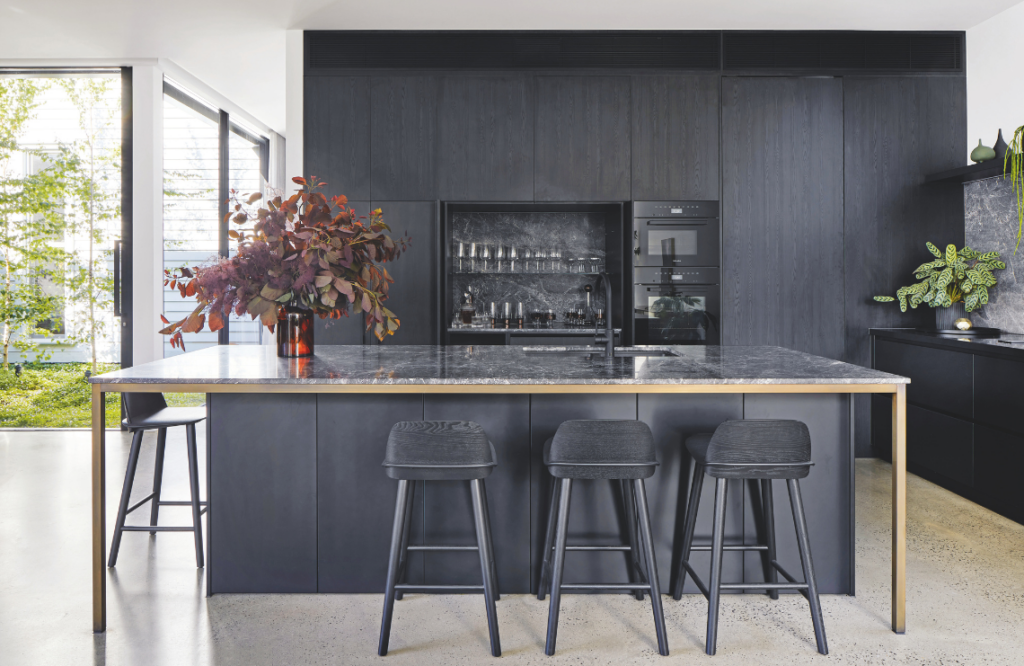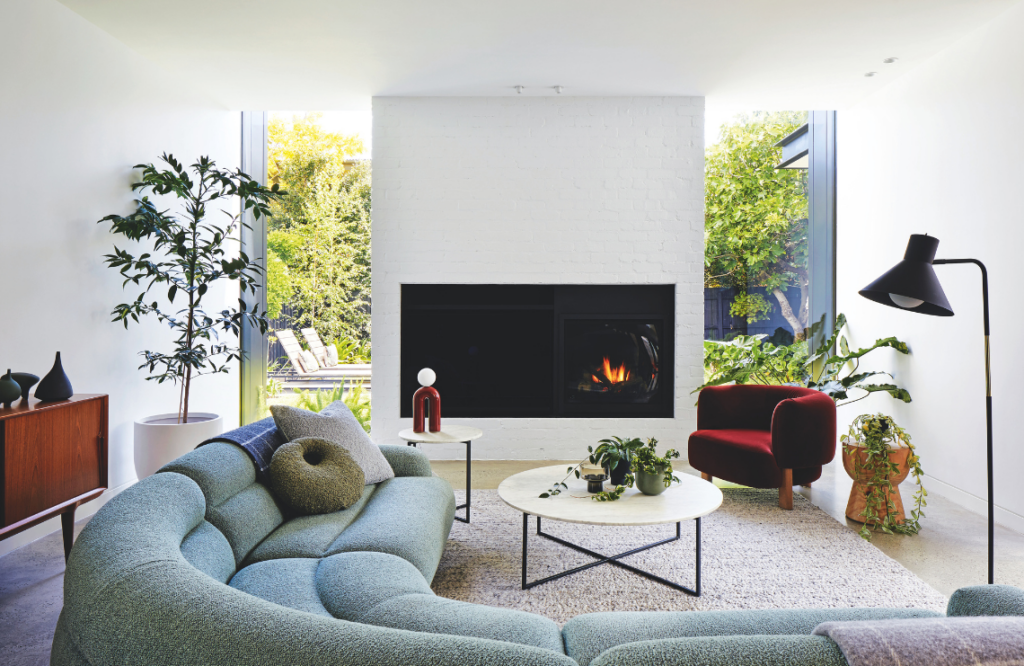This classic, double-fronted heritage abode has had a sophisticated upgrade featuring moody, textural tones and loads of natural light. With a brief to restore this once drab heritage home to its former glory, the owners also chose to open it up, creating access to natural sunlight and connecting it to the landscape.
Restoring Heritage and Maximizing Natural Light
“The front of the home was rundown but had great heritage value,” says Andrew Stapleton, director of DOOD Studio. “We wanted to keep this intact and restore it to its former glory. The rear was dark, low and constricting, with a small kitchen, laundry and bathroom on the back of the house. Access to natural light and to the landscape was lacking.” To solve this, Andrew and his team created a north-facing light court in the centre of the dwelling, allowing solar access to spill into most areas of the home.
“The site faces south, so access to natural light was very important. We made the decision to forego a fourth bedroom in lieu of a light court,” says Andrew. “This creates an amazing sense of light and space in the home and provides direct access to landscape views at all times of the day.” This is a perfect contrast to the home’s deep-toned interior, which uses a mix of textured stone, dark timber and aged brass detailing. We applied rich textures that create depth and play to the interiors.”

Deep, dark tones and hidden storage make the perfect cosy kitchen
To create a front master suite, they added a walk-in robe and ensuite that ate partly into the other bedroom.
The new addition to the three-bedroom, two-bathroom Victorian home is at the rear, which features a deliberate step-down. This new section took inspiration from modernist architecture, featuring clean, simple and linear forms. It features exposed concrete floors; a simple bathroom, a walk-in pantry and laundry in the breezeway; a discreet dark kitchen; a living/dining space and an expansive alfresco zone.
Creating a Rich, Textured Atmosphere
“We wanted a rich, textured ‘bar/ restaurant’ feel to the home,” shares Andrew. “Intimacy and mood were key phrases that kept popping up, so we leant into that concept.”
All utilities of the heritage home were cleverly concealed behind a wall of cabinetry to create a clean and simple space with no clutter on display. The planning, design and execution of this was a challenge with a striking outcome. “While very light- filled, the dark moody interior palette also makes it a very cosy home,” continues Andrew. “It is luxurious without being ostentatious.”

Warmth and comfort are the themes for this moody abode
The home’s structural design is very intricate, with floating corner-stacking doors and a cantilevering steel canopy making up the alfresco area. All of this is held up by detailed steel beams and columns hidden from sight.
Sustainable Design and Connection to Nature
The garden is surrounded by large canopy trees that create a natural sanctuary, perfect for homeowners who are keen gardeners and do all the landscaping themselves. The exterior bricks of the heritage home were lovingly recycled from the previous backyard, painted with a bagged treatment and reused within the home’s new design. This was important to the homeowners as they wanted to increase the dwelling’s sustainability. Other sustainable choices were to create a solar-passive design, with the north-facing light court and cross ventilation of the space reducing the need to heat and cool the home. Any draughty spaces were taped up and extra insulation was also added.
Andrew’s advice on creating a moody home? If you’re going to go dark, always add lots of light and texture. “This creates an amazing sense of light and space in the home,” he says. “You can feel the seasons and times of the day more than any other house I have designed. It has an amazing connection to the landscape.”




















